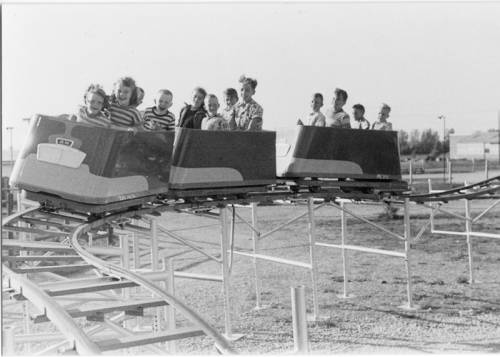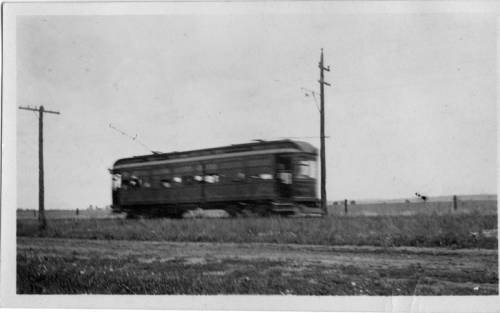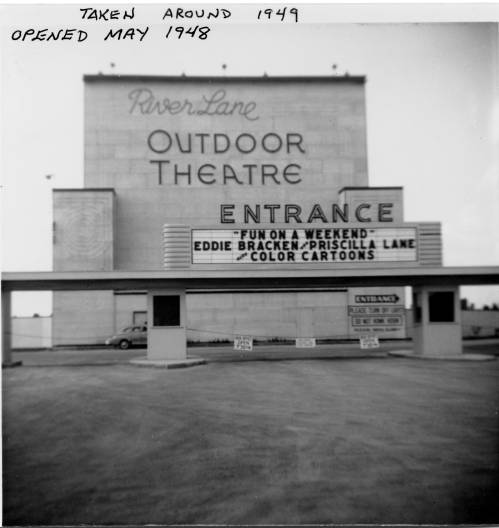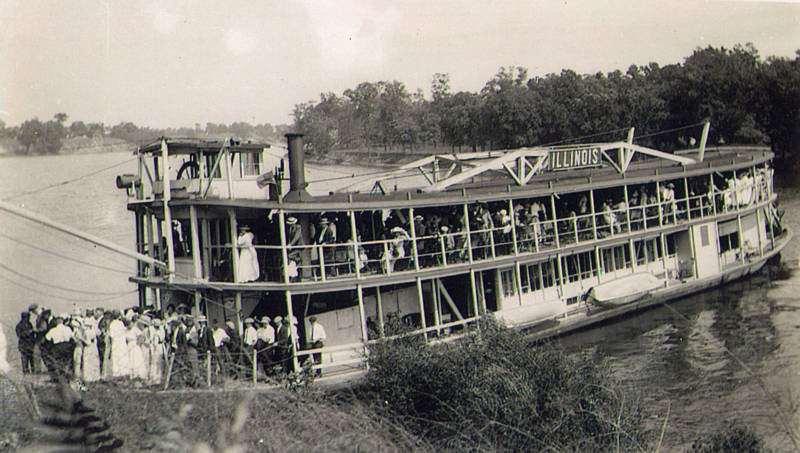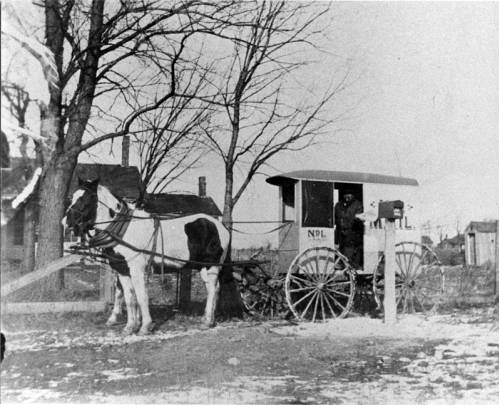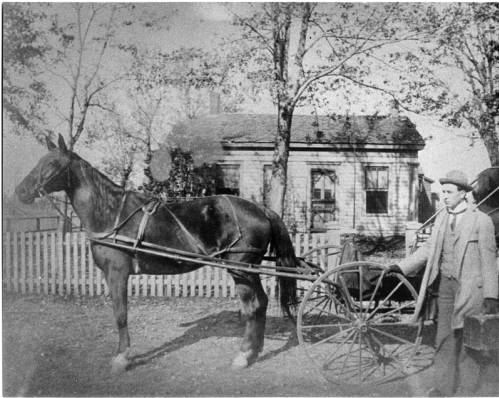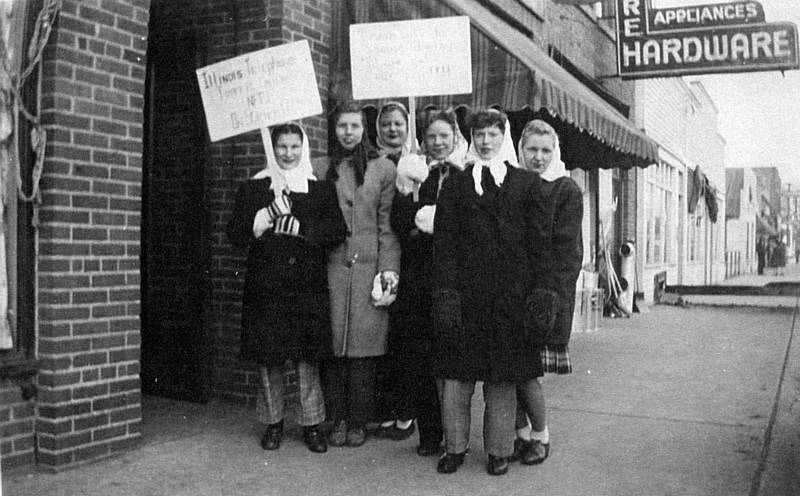As a native Texan, I have always regarded winter sports with a healthy amount of both respect and fear. However, an exception to this innate mindset was made every four years with the performance of the Winter Olympics. For those few weeks, I was awed by the grace of the figure skaters, the fearlessness of the luge racers, and the gravity-defying feats of snowboarders in the half-pipe. With the winter season in full swing here in Illinois, and the 2022 Winter Olympics just around the corner, the IDHH would like to feature a staple winter sport: ice skating.
Ice skating is believed to have developed in Scandinavia as early as 1000 BCE, using skates initially made from the bones of elk, oxen, reindeer, and other animals. While it is not exactly known when metal blades were introduced in the construction of ice skates , Dutch paintings from the 17th century clearly depict skaters gliding along on metal blades. Gaining in popularity as a recreational pastime in the 1800s, the activity eventually reached North America and a number of skating clubs were established in major cities in the Northern Hemisphere. Toward the end of the century, the sport would be indelibly changed in 1876 with the creation of the first rink using artificially frozen ice – the Glaciarium in London. The artificial ice rink in Madison Square Gardens opened soon after in 1879 and the innovation of creating artificial rinks led to the rise of various skating sports and a desire for ice shows as popular entertainment. Eventually, ice skating would make its debut in the 1908 Summer Olympics, with speed skating to follow as an event at the first official winter games in 1924.
Whether a newcomer to skating or a veteran of the ice, please enjoy a few of our favorite ice skating items from the collection:
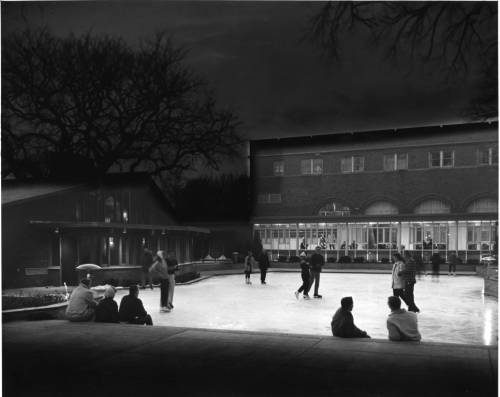
Ice skating rink. 1960. Knox College. The Way to Knox. Courtesy of Knox College.
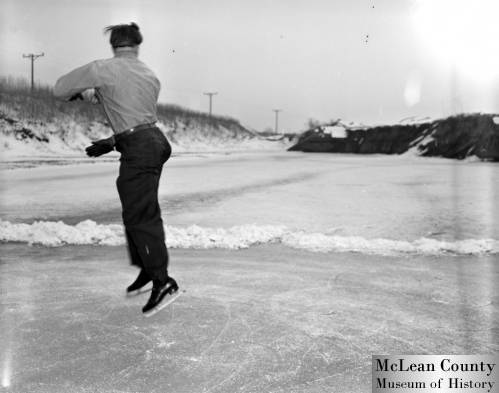
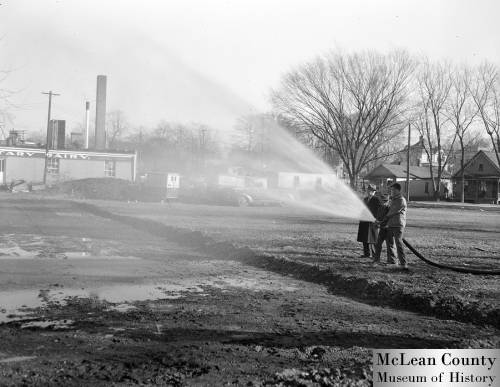
Flooding skating rink, 1946. December 17, 1946. Photographed by Phyllis Lathrop. McLean County Museum of History. Pantagraph Negative Collection, 1946 – 1949. Courtesy of the McLean County Museum of History.
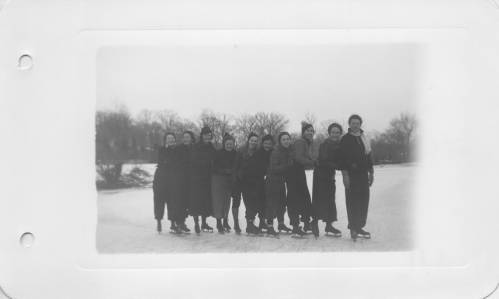
Ice-Skating Line – 1937. 1937. University of St. Francis. Sharing Our Past, A Visual History. Courtesy of University of St. Francis.
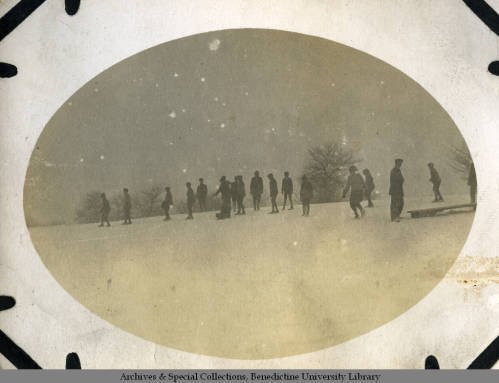
Slough. 1920. Benedictine University. John Jochman Album. Courtesy of Benedictine University.
Want to see more?
Visit the IDHH to explore other items related to ice skating.
